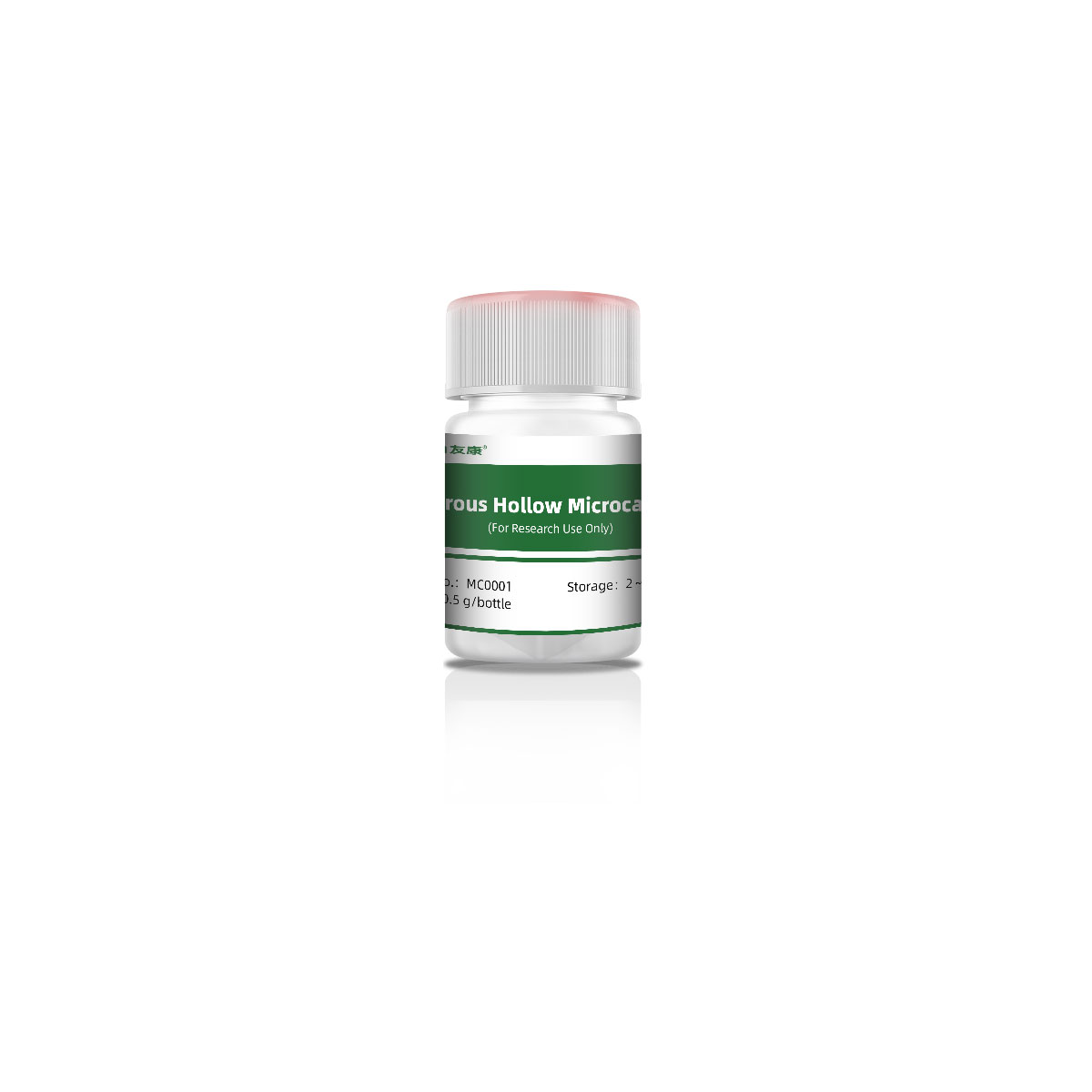
Cell Culture Media
Porous Hollow Microcarrier
Quantity
Product Highlight
- This product provides adherent cells such as stem cells with a large adhesion area. It is a microcarrier that supports the proliferation of adherent cells, enabling the efficient increase of cell culture quantity and the harvest of secreted products.
Product Information
Product Specifications:
| Appearance | White powder |
|---|---|
| Material | Gelatin |
| Particle - size range (μm) | 200 - 450 μm |
| Specific surface area (cm²/g) | > 3900 cm²/g |
| Number of micro - spheres | Approximately 1.4×10 ⁶ spheres/g (dry weight) |
| Sterilization | Non - sterile |
Storage Conditions
- The unopened microcarriers should be stored in a dark and dry place at 2 - 8°C for 12 months.
- The microcarrier suspension sterilized by high - temperature and high - pressure can be stored briefly in a sterile environment at 4°C for one week.
Overview of Usage Method
Take umbilical cord mesenchymal stem cells as an example:
- It is recommended to use umbilical cord mesenchymal stem cells of passage 3 or below.
- Recommended amount of microcarriers to be added: 0.5 g/100 mL
- Recommended number of inoculated cells: 3.52×10⁷ cells/g
- That is, add 0.5 g of microcarriers to a 100 - mL culture system and inoculate 1.76E7 cells.
It is recommended to use Serum - free Medium for Mesenchymal Stem Cells (LNC0103).Depending on the passage number of the inoculated cells, it should be used in combination with Serum - free Medium Additive 1 for MSCs (Umbilical Cord - Primary Cell Isolation and Seed Bank Construction) (LNC0103.S) or Serum - free Medium Additive 2 for Mesenchymal Stem Cells (Umbilical Cord - Cryopreserved Cells and High - passage Cell Sub - culturing) (LNC0105.S).
The culture processes for different types of cells may vary. When using microcarriers for culture for the first time, condition exploration and optimization are required, including the amount of microcarriers added, the stirring speed, the cell density, etc.
Experimental Instruments
4 - channel Cell Culture Magnetic Stirrer MS - C - S4 (DLAB)
Double - walled Cell Culture Flask, 125 mL (DLAB 18900747)
CO2 Incubator
Microcarrier Pretreatment
- Weigh a certain amount of microcarriers and fully immerse them in DPBS to prepare a microcarrier suspension.
- Sterilize the microcarrier suspension from the previous step by high - temperature and high -pressure, at least 121°C for 30 min. Do not perform the drying procedure, and the microcarriers should not completely lose water.
- Let it stand and cool down under aseptic conditions.
- Prepare a complete medium by adding additives to the medium base.
- The microcarrier suspension will settle when left standing. Remove the supernatant, then add the complete medium to resuspend the microcarriers, just enough to immerse them, to replace the DPBS in the microcarriers.
- Let the microcarriers settle by standing and remove the supernatant. Steps 4 and 5 can be repeated 2 - 3 times to fully replace the DPBS in the microcarriers and obtain the washed microcarriers.
Cell Culture
It is recommended to use cells of passage 3 or below.
- Resuspend the microcarriers again with the complete medium. Add the cell suspension containing 1.76E7 cells to the microcarrier suspension, mix well, add it to the microcarrier bottle, and supplement the medium to 100 mL. Cell culture is carried out in a CO₂ incubator with a CO₂ concentration of 5% and a temperature of 37°C.
- Set the stirring program:
- Stirring speed 35 rpm, 2 min.
- Standing for 480 min.
- After a full - volume medium change, keep the stirring speed at 35 rpm and continue the culture. Change the medium to full volume every 3 days.
Repeat steps (1) and (2) three times.
Full - volume Medium Change Method
Stop the rotating bottle, let it stand to settle the microcarriers, aspirate the supernatant as much as possible, and then supplement with fresh medium to continue the culture.
Culture Performance and Cell Status
The expected adhesion rate is over 85% after the adhesion procedure is completed. Observe the cell distribution by fluorescence staining every 72 hours.
| Culture time | Fluorescence Staining (Calcein AM staining, green fluorescence indicates live cells) |
|---|---|
| 3 Days | 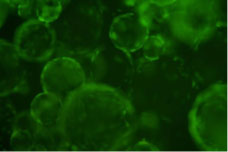 |
| 6 Days | 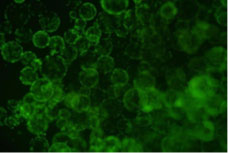 |
| 9 Days | 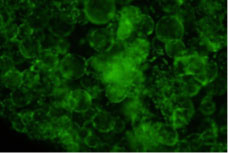 |
| 12 days | 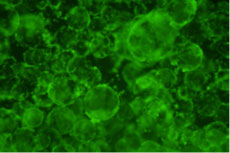 |
Analysis of Soluble Cell Vesicles
Detect the particle concentration and particle - size distribution using the nanoparticle flow cytometry method.
| Culture Time | Particle Concentration (particles/mL) | Particle - size Distribution |
|---|---|---|
| 6 days | 8.87E9 | 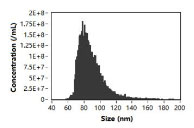 |
| 9 days | 6.23E9 | 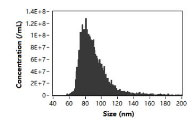 |
| 12 days | 1.1E10 | 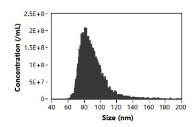 |
| 15 days | 9.24E9 | 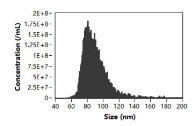 |
Precautions
- After 96 hours, when the cell proliferation on the surface of the microcarriers reaches a certain extent, cell - clustering may occur, which is a normal phenomenon. In the early stage, the clustered structure is loose and can be dispersed, and it does not affect the cell culture in the rotating bottle.
Subsequently, the clusters may become larger with cell proliferation. - If using a medium with phenol red, closely observe the color of the medium and change the medium in a timely manner as needed.
- During the microcarrier pretreatment and cell - seeding culture process, the containers in contact with the microcarriers need to be silanized, especially the cell - culture rotating bottles, to avoid wall - sticking.
- After high - temperature and high - pressure sterilization treatment, there may be a small amount of clustering, which is a normal phenomenon and can be dispersed without affecting the subsequent cell culture in the rotating bottle.
- It is recommended to use cells within passage 3. Do not use cells with high passage numbers, as it is very likely to affect the exosome yield.
- When pretreating the microcarriers, cancel the drying program of the sterilization equipment or take out the microcarriers before entering the drying program. The microcarriers should not completely lose water.
- 100%
Money back - Non-contact
shipping - Free delivery for
order over $200

Do you have questions...
... about using our products?
Contact Technical Support... about ordering our products?
Get Ordering Help... or about our company?
Send General Inquiry